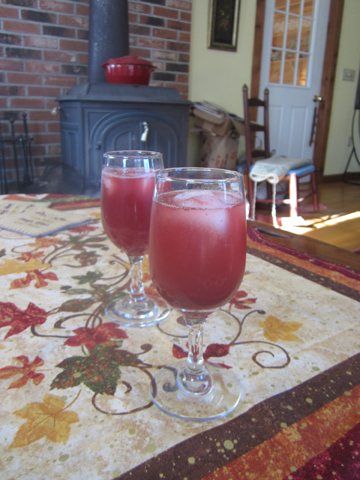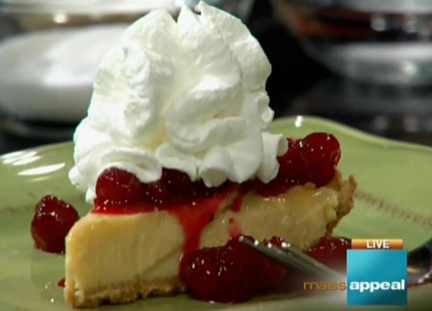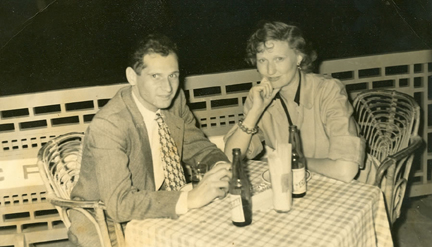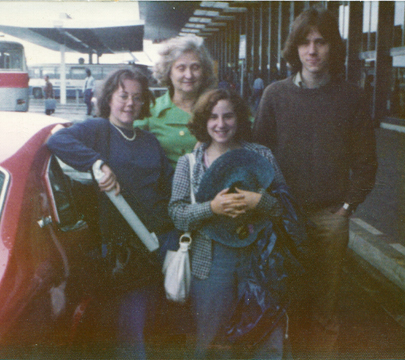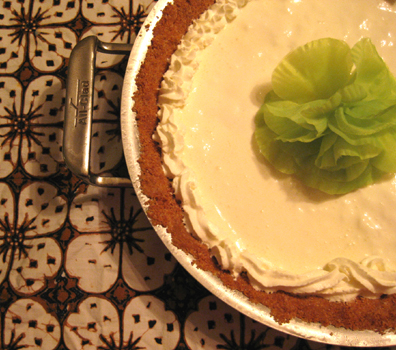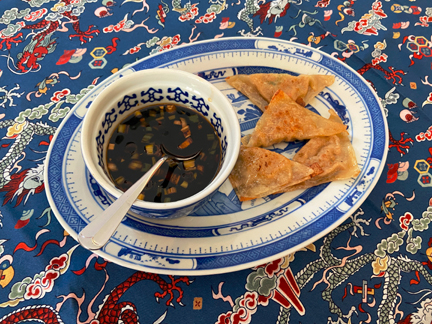
February may be the shortest month of the year, but it’s long on holidays. When I was in second grade our class performed a short play in which each of us got to talk about one of this month’s special days.
In the next week alone several holidays are coming up: the Chinese New Year, Valentine’s Day, Presidents’ Day, and Mardi Gras/Shrove Tuesday. I don’t have room to celebrate them all in this column so I am focusing on the first. I encourage you to do something for every single one, however.
Tomorrow, February 12 (also Lincoln’s birthday!), marks the start of this year’s Chinese New Year. I love lunar holidays. To those of us who measure out our lives according to the Gregorian calendar, holidays that don’t fall on the same date every year offer a welcome unpredictability.
This lunar new year comes on the second new moon after the winter solstice so it can fall anywhere from late January to late February. This year it’s right in between.
As many readers know, there are 12 signs of the Chinese Zodiac. Each is assigned an animal, and the animals repeat in a cycle of 12 years, roughly corresponding to the time it takes Jupiter to orbit the sun. This year will be the year of the ox.
People born in this year (or born 12, 24, 48, or 60 and so on years ago!) will exhibit ox-like characteristics. They will tend to be hard working, dependable, and generally solid.
The Chinese New Year is a time when Chinese families get together. During these reunions family members begin the new year’s celebration, which lasts for more than two weeks, by preparing food together. A special favorite, especially in the north of China, is dumplings.
My dumpling recipe isn’t necessarily authentically Chinese, but it has plenty of Chinese flavor and flavors. I have to admit that I cheated a little; I purchased my dumpling wrappers.
To me dumpling wrappers are like tortillas, something one makes best if one makes them all the time. I have never made them. I hadn’t even made dumplings themselves before starting to work on this article.
I actually strayed further by using store-bought wonton wrappers rather than dumpling wrappers. The wonton wrappers, which like most of the ingredients in the dumplings are available in most supermarkets, are slightly thicker than dumpling wrappers and therefore a little easier to work with.
I hope making and eating the dumplings will give you warm feelings of family and hope for the months to come. Happy Chinese New Year! Here’s to finding something to celebrate every day of the month and every day of the year.
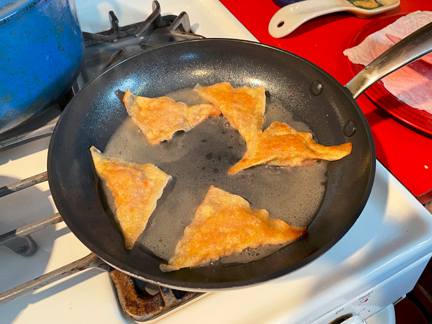
Year of the Ox Dumplings
Ingredients:
for the filling:
1/2 pound ground pork (or ground chicken if you don’t eat pork)
1 egg, beaten
1/2 cup finely chopped cabbage (preferably Chinese cabbage, but any cabbage will do in a pinch)
2 scallions (white part only), chopped
1 tablespoon grated carrot
1 clove garlic, minced
1 small finger ginger, minced
1 teaspoon toasted sesame oil
1 pinch sugar
1 teaspoon soy sauce
1/2 teaspoon cornstarch
for the dipping sauce:
3 tablespoons soy or tamari
2 tablespoons rice vinegar
1 teaspoon sesame oil or toasted sesame oil
1 teaspoon chili oil
1 clove garlic, minced
1/4 teaspoon minced ginger
1 scallion, chopped (white plus some green)
for assembly:
24 wonton or dumpling wrappers (possibly even more, depending on how big they are)
1 egg
1 tablespoon water
canola or peanut oil as needed for frying
Instructions:
Combine the ingredients for the filling. Refrigerate them while you assemble the other ingredients.
Combine the ingredients for the dipping sauce in a bowl. Set them aside.
For each dumpling, spoon about 1 teaspoon of the filling into the center of a wrapper. Do not overfill your dumplings! Combine the egg and the water.
Use your finger to coat the edges of the wrapper with a bit of the egg mixture. Fold the wrapper in half to cover the filling, and seal carefully with more egg mixture. Put the filled dumplings on a plate or board, and cover them with a damp paper towel.
Pour enough oil into a nonstick skillet to cover the bottom, but barely. Heat the oil over medium heat until it shimmers. Add enough dumplings to make 1 layer. (The dumplings should not touch each other in the pan.)
Cook the dumplings until their bottoms begin to brown and then flip them over and brown them lightly on the other side. Reduce the heat to low, add a splash of water (about 1/4 to 1/3 cup). Watch out for sizzling and splattering when the water hits the oil.
Cover the dumplings. Cook for 2-1/2 minutes. Uncover the dumplings and cook them until the liquid has almost disappeared and the bottoms are crispy. Remove them to a serving platter. Repeat with the remaining dumplings. Serve with the dipping sauce.
Makes a lot of dumplings.
I made a video of these to send to Mass Appeal so you can see my technique. (I use the word loosely! I used too much oil in the pan.) I also made my beloved key-lime pie as a Valentine treat on Mass Appeal. Here are those videos:
Tinky Makes Dumplings on Mass Appeal
Tinky Makes Key-Lime Pie for Valentine’s Day
